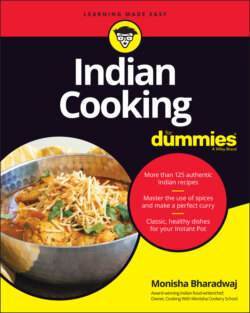Читать книгу Indian Cooking For Dummies - Monisha Bharadwaj - Страница 22
Kolkata and Bengali sweets
ОглавлениеThe mere mention of Indian sweets, and I see eyes being rolled and a muttered, “Too sweet for me.” Most people not of Indian origin think of all Indian sweets as being cloying. But wait, have you ever had a box of chocolates? It’s the same principle: Commercially available sweets have a lot of sugar to increase their shelf life. Indian homemade desserts are subtly flavored confections (see Chapter 21 for some easy and delicious recipes) bursting with fruit, milk, spice, and all things nice.
The eastern state of Bengal is particularly known for its sweet offerings. According to historians, the original name of the area was Gauda, derived from the Sanskrit word for jaggery, the sweet, thickened juice of sugarcane. Because this crop grew here in plenty, and old texts affirm this, it can be safely said that sweets were an important part of the cuisine for several centuries.
But Bengali sweets are unlike those of anywhere else in the country, mainly because many are made with cottage cheese as a base. I’ve heard that the Portuguese, who were in India before the British, brought the skill of cheese making to Bengal. The Hindus considered the curdling of milk taboo, but that didn’t stop them from falling in love with the resulting delicacies. They quickly created recipes using fresh cottage cheese, spices, sugar, and nuts and produced pillowy-soft confections that melted in the mouth and left you wanting more. As these began to be mass produced in factories, the sugar content increased. Today, the gulab jamuns and ras malai you see on Indian restaurant menus have set the stage for everyone thinking that all Indian sweets are syrupy sweet.
